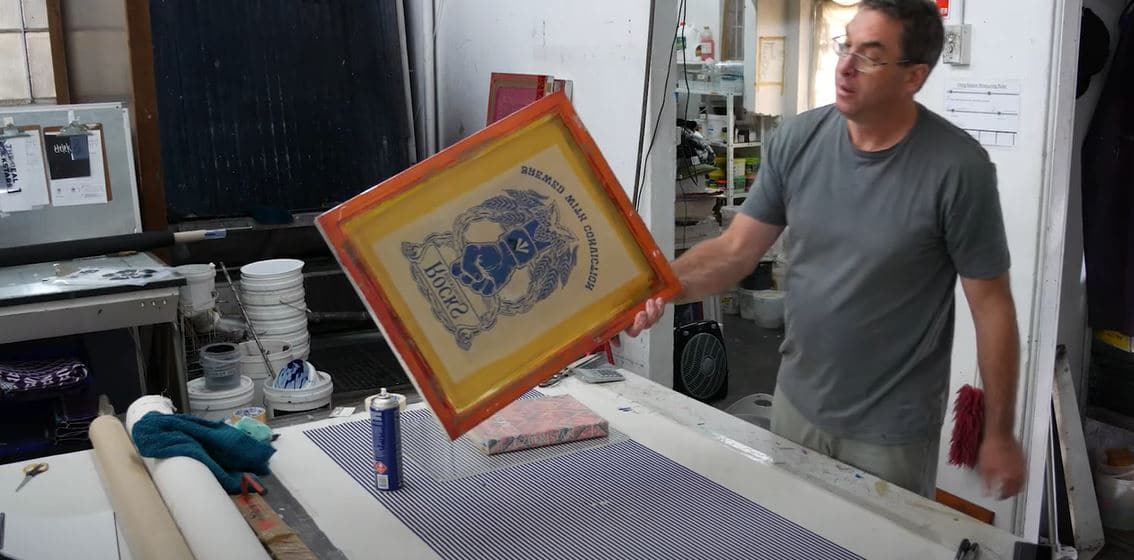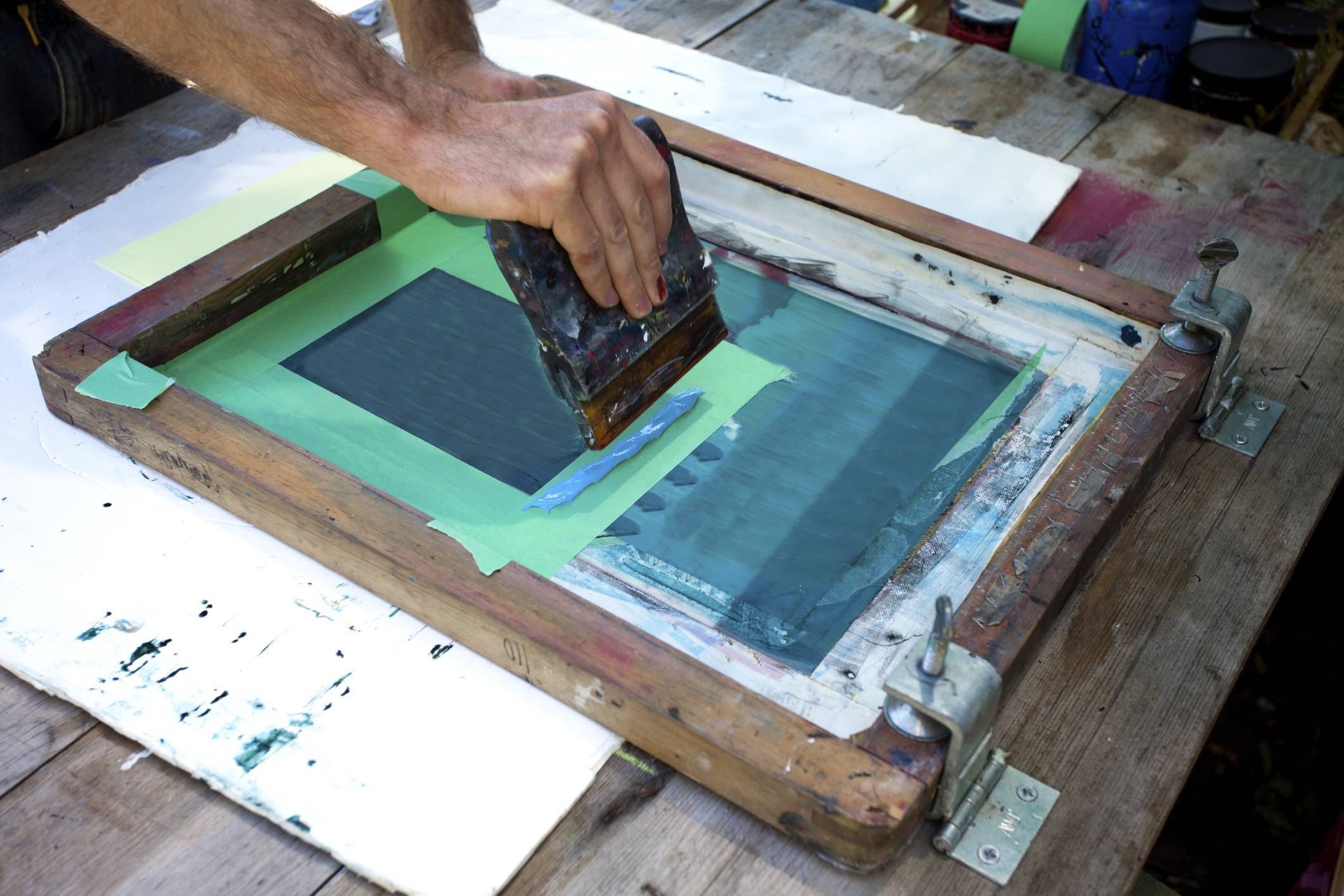ChatGPT said: Why 10:9 Design Screen Printing is perfect for corporate gear
Discover the Various Kinds of Screen Printing Techniques for Your Next Job
Screen printing offers a diverse variety of methods that can boost any imaginative project. From typical methods like serigraphy to contemporary innovations such as direct-to-garment printing, each method has its one-of-a-kind benefits. Specialized alternatives, including metallic and environmentally friendly inks, introduce even extra possibilities. Comprehending these strategies can greatly affect the last end result. However, the difficulty depends on picking the most suitable technique for details needs and preferred impacts. What elements should one think about?

The Basics of Screen Printing
Screen printing might seem complex, it is fundamentally a straightforward procedure that includes transferring ink through a mesh screen onto numerous surface areas. The technique begins with the production of a pattern, which defines the design to be published. This pattern is connected to a mesh screen, normally made from polyester or nylon. Once the pattern remains in area, ink is related to the screen and pressed via the mesh making use of a squeegee, leading to the desired pattern being published on the underlying product.
Screen printing can be carried out on a large range of substrates, including paper, textile, and plastic, making it a flexible selection for different projects. The procedure enables vivid colors and intricate styles, making it popular in sectors such as art, advertising and marketing, and fashion. Understanding these fundamentals equips individuals with the fundamental knowledge needed to discover advanced methods in screen printing.
Typical Screen Printing Techniques
Conventional screen printing strategies have actually been employed for centuries, protecting the workmanship and artistry of this approach. This technique utilizes a mesh screen to transfer ink onto a substratum, such as fabric or paper, enabling long-lasting and lively layouts. The process begins with producing a pattern, which obstructs particular locations of the screen to control where the ink will be applied.
One prominent technique is serigraphy, typically utilized for creative prints and limited editions. One more is the use of water-based inks, which are environment-friendly and offer a soft feel on textiles - 10:9 Design reviews. Furthermore, conventional methods can consist of hands-on printing, where artisans use ink with a squeegee, making sure precision and focus to information
These techniques continue to be valued in the market for their tactile top quality and the special textures they generate, attracting both consumers and makers that value the heritage of screen printing.
Digital Screen Printing Innovations
As the demand for faster manufacturing and personalization in the printing industry has actually surged, electronic screen printing technologies have become a game-changer. This technology mixes conventional screen printing approaches with digital procedures, enabling quick prototyping and elaborate layouts that were previously tough to achieve. One considerable advancement is the intro of direct-to-garment (DTG) printing, which facilitates top quality, full-color prints on numerous textiles without the requirement for displays. Additionally, innovations in ink formulations have actually brought about environmentally friendly alternatives that maintain dynamic colors while minimizing environmental influence. Making use of automated systems further enhances manufacturing, decreasing labor expenses and boosting precision. These developments not just satisfy small batch orders and individualized layouts but also enable quicker turn-around times, making them excellent for companies concentrated on conference consumer needs in a fast-paced market. Digital screen printing, consequently, represents a crucial evolution in the domain of printing techniques.
Specialty Screen Printing Methods
Checking out specialty screen printing methods exposes a diverse range of techniques that push the limits of imagination and functionality in the printing market. Among these, glow-in-the-dark inks provide a distinct visual effect, making designs come to life in low-light problems. Metallic inks, known for their shimmering finish, add a touch of deluxe to a fantastic read published products. One more ingenious technique is discharge printing, which removes dye from the fabric rather than including ink, leading to a soft, vintage feel. High-density printing creates a raised appearance on the surface area, improving responsive involvement. Additionally, water-based inks are gaining appeal for their lively colors and reduced environmental impact. Each of these specialized strategies satisfies details layout demands, making it possible for brands and artists to develop standout items that resonate with their audiences. By leveraging these approaches, companies can elevate their screen printing projects to new elevations, making sure remarkable perceptions.
Eco-Friendly Screen Printing Options
Environmentally friendly screen printing choices are acquiring traction as the sector changes towards sustainability. Lasting ink options and making use of eco-friendly products are key parts in reducing the environmental effect of the printing procedure. By embracing these practices, screen printers can contribute to an extra lasting future while maintaining high-grade outcomes.
Sustainable Ink Options

Biodegradable Materials Use
As the screen printing industry advances, the consolidation of eco-friendly materials is coming to be progressively important for ecologically conscious techniques. Designers and suppliers are currently exploring inks and substrates made from all-natural, sustainable sources that break down extra effectively than typical counterparts. These eco-friendly options minimize plastic waste and decrease environmental influence, aligning with the growing need for sustainable products.
Common instances consist of water-based inks and organic cotton materials, both of which decrease harmful chemicals and promote eco-friendliness. Brand names that take on these materials typically boost their market allure, attracting customers that focus on sustainability. As recognition my explanation of environmental problems proceeds to rise, the shift towards eco-friendly products in screen printing is most likely to gain momentum, promoting a greener market criterion.
Picking the Right Strategy for Your Project
How can one figure out one of the most ideal screen printing strategy for a specific project? The decision depends upon several factors, including the material to be printed on, the complexity of the layout, and the wanted manufacturing quantity - 10:9 Design Abilene. For instance, direct-to-garment printing is perfect for elaborate designs with numerous shades, while typical screen printing succeeds for bigger runs of easier graphics
Additionally, factor to consider of the end-use of the printed item is essential. For exterior applications, strategies that provide sturdiness and weather resistance, such as plastisol ink, may be favored. On the other hand, environmentally-conscious projects might gain from water-based inks or naturally degradable materials.
Ultimately, recognizing the job's unique needs enables an informed option, guaranteeing both visual charm and functional long life. By assessing layout complexity, product compatibility, and manufacturing scale, one can successfully choose the most proper screen printing technique to fulfill their project's objectives.
Frequently Asked Inquiries
What Is the History of Screen Printing?
Screen printing originated in ancient China around 1000 ADVERTISEMENT, progressing with Japan and reference Europe. By the 20th century, it came to be prominent in commercial art and style, revolutionizing just how designs were created and dispersed worldwide.

Exactly how Do I Prepare Artwork for Screen Printing?
To prepare artwork for screen printing, one must guarantee high resolution, utilize an appropriate color mode, create different layers for each and every shade, and convert text to outlines, assuring compatibility with the printing procedure and preferred result.
What Materials Are Best for Screen Printing?
The most effective products for screen printing consist of top notch inks, long lasting screens, and suitable substratums like cotton, polyester, or blends. Furthermore, utilizing appropriate solution and mops can improve the printing process and results.
Can I Screen Publish in your home?
Yes, screen printing at home is possible. With the best materials, arrangement, and methods, individuals can develop top notch prints. Nevertheless, careful factor to consider of work area and equipment is essential for effective results.

What Are Typical Errors in Screen Printing?
Usual mistakes in screen printing include improper exposure times, insufficient ink uniformity, imbalance of displays, not enough cleansing of products, and disregarding to evaluate prints. These errors can jeopardize the quality and accuracy of the end product.
Screen printing might appear facility, it is basically an uncomplicated procedure that entails moving ink with a mesh screen onto different surfaces. As the demand for faster manufacturing and customization in the printing sector has actually risen, electronic screen printing innovations have emerged as a game-changer. Checking out specialty screen printing methods reveals a varied selection of strategies that press the limits of imagination and functionality in the printing industry. The ideal products for screen printing include premium inks, resilient screens, and ideal substratums like cotton, polyester, or blends (10:9 Design LLC Company). Common blunders in screen printing include improper direct exposure times, insufficient ink consistency, imbalance of screens, insufficient cleansing of materials, and neglecting to check prints